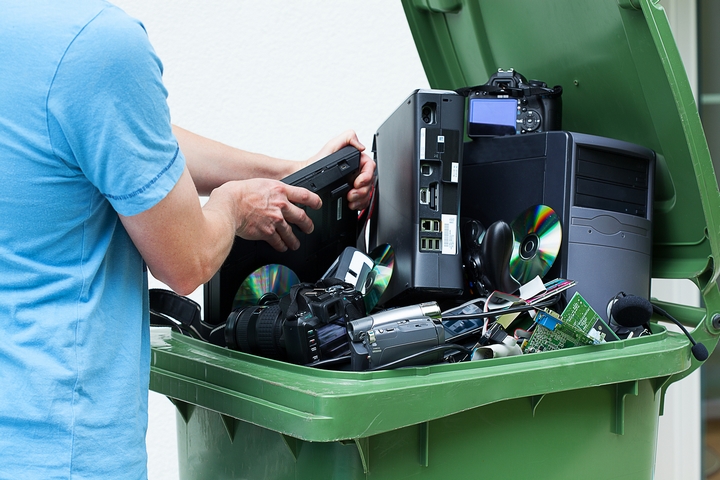You love your old computer. It’s always been there for you and you had some good times with the box. But it’s not running as well as the newer models on the market and you just can’t upgrade its software to the next best thing. So what do you do with the dinosaur, do you throw it out – monitor, computer, keyboard and all? No! There’s a much more sophisticated process that will make the most out of your old friend.
Electric recycling in the process of disassembling computers to get its raw materials and repurpose them for other tech. This process is far from a hassle, all you have to do it find one of the Ontario Electronic Stewardship (OES) – approved locations near you where you can drop off your old electronics. One of the biggest reasons for electronics recycling is because it’s great for the environment. Here are a few ways recycling your electronics can save the plant:
1. Recycling keeps e-waste out of landfills

The biggest problem with electronic waste it that it contains components that are toxic to the environment. Some of these toxic substances include dioxins (a chemical compound known for being used in the Vietnam War weapon Agent Orange), cadmium, mercury, polychlorinated biphenyls (PCBs), chromium, beryllium and other flame retardants, and radioactive isotopes. These toxins, especially if left uncontained, could have serious adverse effects on our surrounding ecosystems. These toxic elements and compounds can seep into the ground soil and possibly the groundwater, intoxicating the landscape. This can affect plant growth in nearly areas, thereby hurting local wildlife.
2. Recycling protects our natural resources

When e-waste is kept out of the landfill, local natural resources are protected. Furthermore, the more elements and components we can extract from old computers and televisions, the less energy, pollution, and greenhouse gas emissions are pressed into the environment. One of these biggest movements towards natural resources sustainability comes from recycling electronics.
3. Electronic recycling reuses and repurposes old electronics parts

Once the electronics are kept out of the landfill, that’s where the magic happens. Devices like television sets, monitors, and mobile phones will be tested for visibility: if they’re still usable, then they could be donated into organizations in need. If the device is destroyed beyond repair, then a labor force may be able to break the device down and extract valuable parts from it like copper, aluminum, lead, gold, and palladium.
Re-using elements like these and removing the battery and active parts to avoid toxic oxidization protects the environment as it creates a circular economy and reduces the demand for these core parts. Repurposing old batteries can also prevent oxidization and protect people and the environment alike. With electronic recycling, you won’t see these devices littering your neighborhood or city block.
4. Recycling can reduce the toxic threat to the atmosphere

Carcinogens from computers could also affect the atmosphere where it’s breathed in by local residents. The way that electronic recycling keeps these components out of the landfill is that a labor force will manually dismantle computers, televisions, and other devices to extract all valuable metals and toxic metals.
Once these metals are shredded down to minute pieces, the toxic metals are checked by people who separate toxic metals from the regular precious metals. Batteries and capacitors are also extracted and repurposed in a way that they will pose no threat to the environment. Toxic metals are also properly reused or disposed of. On top of it all, less landfill space is used up.




